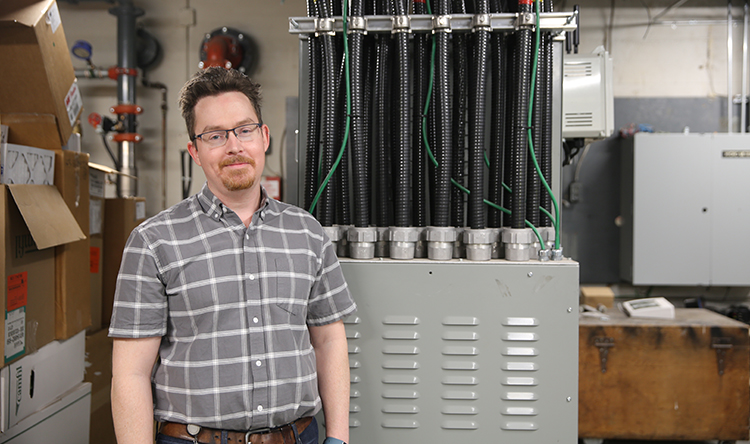Autotransformer pilot project reduces 9.5 tons of greenhouse gases annually
The University of Toronto is increasingly relying on electricity from Ontario's grid to power the St. George campus to reduce our environmental footprint.
While it is a cleaner energy source than burning natural gas, we can further reduce emissions by optimizing how much energy we draw from the grid.
Facilities & Services recently piloted one way to do this at the Jackman Humanities building—using an autotransformer. When the voltage is high in a building, an autotransformer will modulate it down to an optimal level, thereby saving energy.
Why is the voltage high to begin with? Voltage is never constant and relies on a constant equilibrium between supply and demand. Voltage tends to be high overnight and on weekends when demand is lower.
The idea for the autotransformer pilot got off the ground through F&S’s innovation challenge that encourages F&S staff to innovate to solve problems and implement opportunities they see.

Keith Foster, manager of electrical systems at F&S, suggested looking at autotransformers.
The Jackman Humanities Building was chosen as the pilot site for its high incoming voltage. The building is also a designated heritage building, which means it is less likely to undergo significant changes or be demolished. This ensures that the equipment will remain in service over the payback period and beyond, thereby increasing the value of the savings.
“I wasn’t sure this project would work,” said Foster. “We did all the homework and checked all the references and we ended up saving a lot of energy.”
The project was fully funded by a dedicated fund for the innovation challenge, which was set up by Chief Operating Officer Ron Saporta to encourage and support innovation.
“This project paid off in the long run and surpassed our wildest expectations,” said Foster. “We were expecting a 5.4% annual reduction in energy but got a 10.3% reduction instead.”
Larry Yang, energy manager at F&S, is ecstatic about the project.
“This project represents the process of how we adopt innovative technology and new building solutions to combat climate change,” said Yang. “It will encourage others to explore more innovative solutions that will make our campus as sustainable as possible.”
